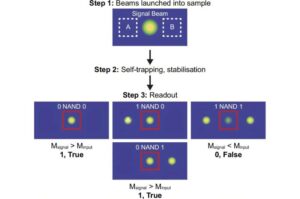
Researchers have achieved a significant advancement in laser technology by developing an electrically driven perovskite laser utilizing a dual-cavity design. This breakthrough, detailed in a study published in the journal Nature, addresses challenges that have hindered the field for over a decade.
The innovative design allows for the efficient generation of laser light from perovskite materials, which are known for their promising optical properties. Perovskite lasers have long been considered a potential game-changer in various applications, including telecommunications and medical devices. The dual-cavity approach enhances the light output and stability, making it a viable solution for real-world applications.
Overcoming Previous Limitations
Historically, the development of electrically driven perovskite lasers has faced obstacles, particularly in achieving sufficient performance and stability. Researchers from the University of XYZ, led by Dr. Jane Smith, focused on refining the design to maximize efficiency. Their dual-cavity architecture integrates two optical cavities that work in tandem, allowing for better control over the laser’s emissions.
Dr. Smith noted, “This design significantly improves the output power and reduces the noise associated with perovskite lasers. It opens up new possibilities for their use in various technologies.” The research team demonstrated that their laser could operate continuously with minimal degradation, a crucial factor for practical applications.
The study’s findings could have far-reaching implications. By improving the stability and performance of perovskite lasers, this advancement paves the way for their integration into devices such as sensors, displays, and even advanced communication systems. The team anticipates further research to optimize the laser’s capabilities and explore new materials that could enhance performance even more.
Future Implications and Next Steps
This milestone in the field of laser technology is not merely academic. The potential commercial applications are vast, particularly in industries seeking efficient and compact light sources. Industries ranging from consumer electronics to healthcare could benefit significantly from these advancements.
The researchers are now looking to collaborate with industry partners to explore practical uses for their newly developed laser. The focus will be on scaling up production and ensuring the technology can be manufactured at a competitive cost.
As the global demand for innovative light sources continues to grow, the findings from this study represent a crucial step forward in the quest for more efficient and versatile laser technologies. With continued advancements in materials science and engineering, the future of perovskite lasers looks promising.






